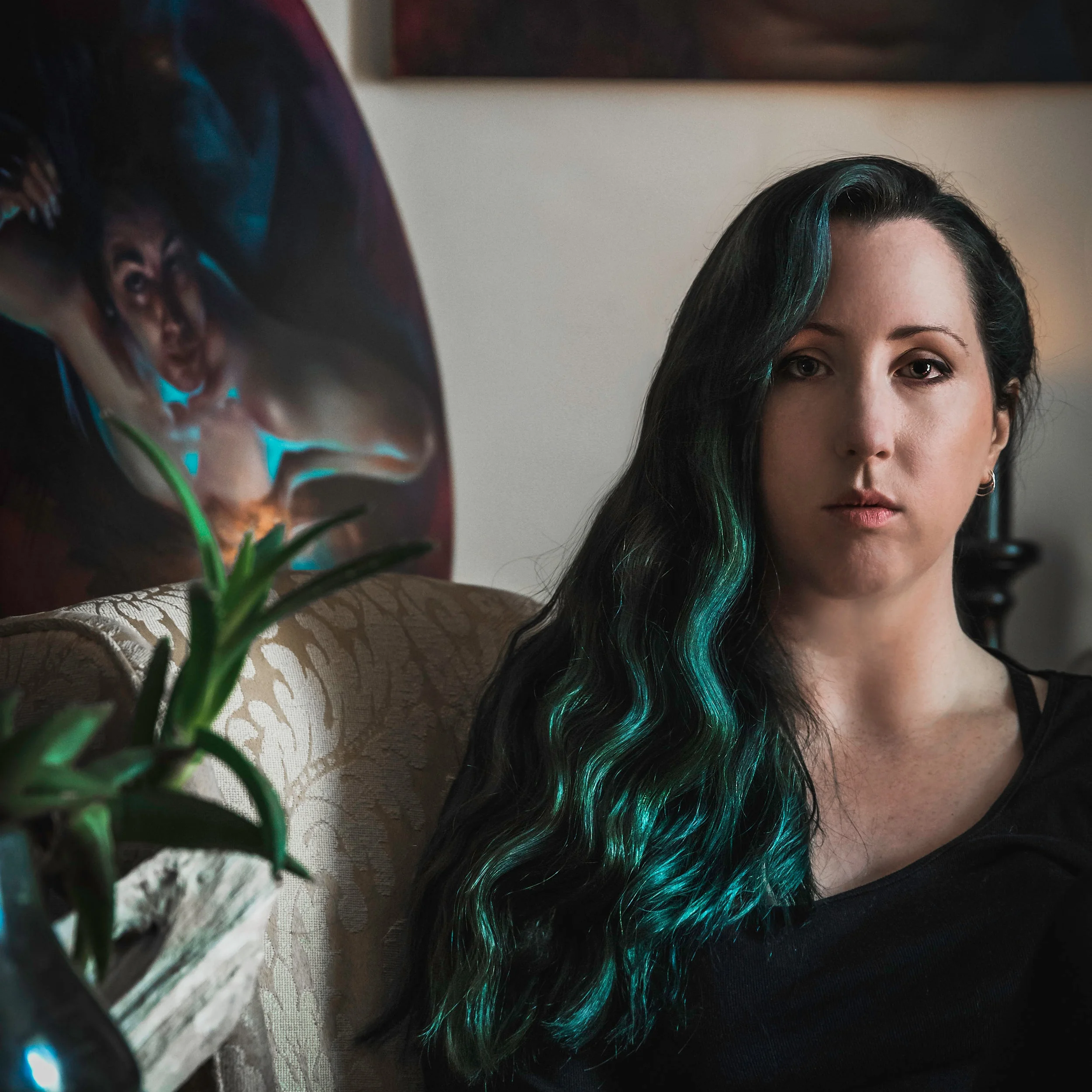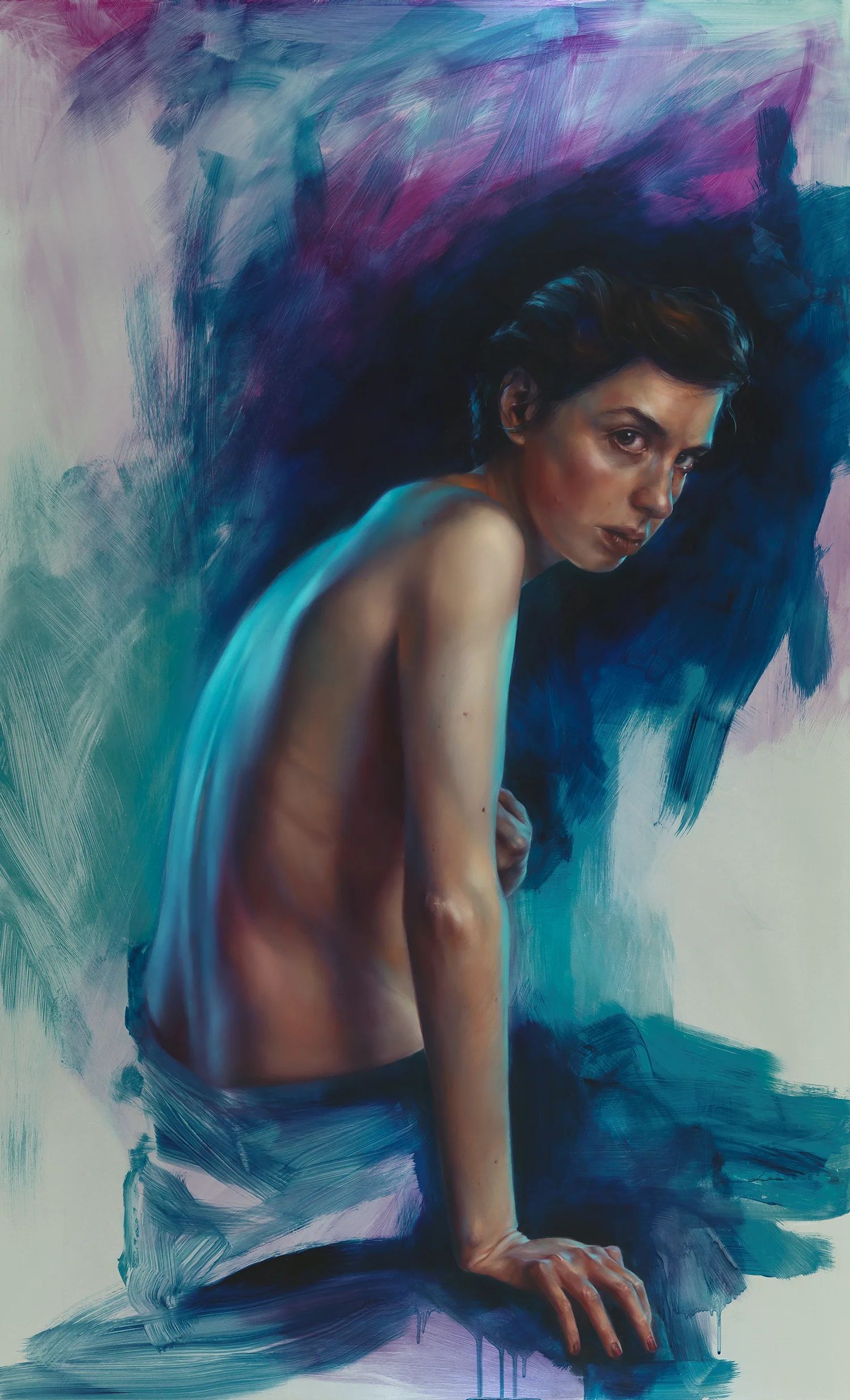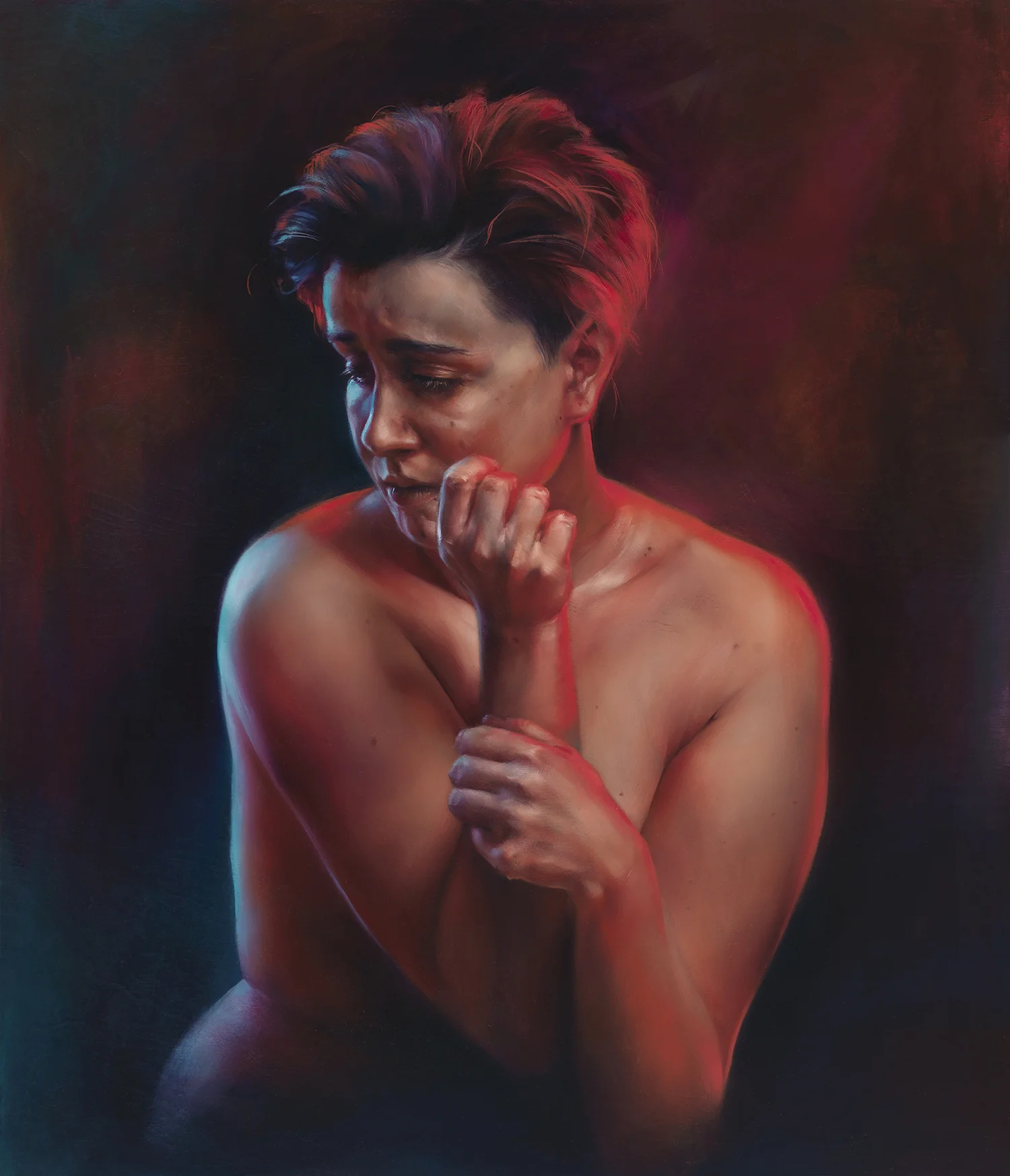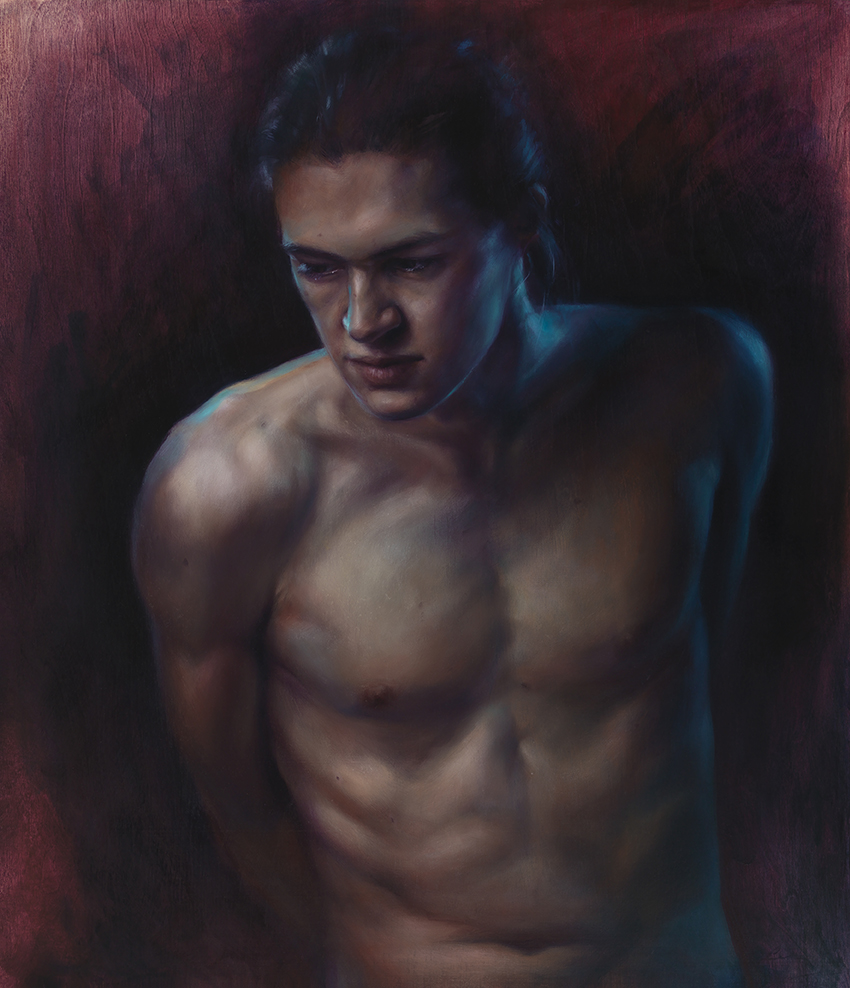It’s easy to lose yourself, even for one moment, gazing at the raw emotion in Liz Gridley’s paintings
Art can have a way of making you stop in your tracks and just react, with whatever emotion surfaces. I felt that way looking at Turner’s Rain, Steam and Speed in London, or when I gaze at large-scale landscape paintings exploring the sublime. I can’t tell you why, or pinpoint exactly how I feel, and I’m sure you’ve experienced something similar.
Liz Gridley, a figurative painter from Melbourne with a growing list of exhibitions and awards to her name, strives to elicit this same emotional connection with the viewer of her work. She wants to make them stop and feel something, even just for a moment as they amble from one painting to another in a gallery.
“It’s so powerful when artwork gets me reacting to it, and it’s what I’m always trying to recreate. So when someone tells me my artwork made them feel something, I’m like, fuck yeah,” she told me in a cafe in Glen Waverley.
“Whatever image punches you in the gut more will make the stronger painting.”
“It’s less about telling people what to think, and more about, ‘look, here’s the thing’, and then they can react to it.”
But as an artist, Liz doesn’t just manipulate the emotions of the viewer. She also feels fully, powerfully, and with pride, creating an empathetic power in her portraits.
“I’m a very emotional person. I wear all my emotions on my sleeve, I always have. I’m the first person to break down and cry the second anything is confrontational. I go bright red in the face, and my nose goes bright red,” she says, turning red.
But the dark subject matter can also come from Liz’s own mental space when she reacts to the hundreds of initial photos and sketches of the models.
Liz Gridley imbues her paintings with raw emotion. Photo: Brent Dakis/Runaway Graphics.
“Whatever image punches you in the gut more will make the stronger painting. But I do think we need more joy in the world, and we need more in painting, because it’s almost too easy to make things about anxiety in today’s world.”
What’s clear, however, is that in each of Liz’s emotive portraits, the feeling of “joy” isn’t ever expressed. Her portraits seem to deep-dive into anxiety, fear, loneliness and other dark hues of emotion. She told me joy is difficult to capture in a genuine way and instead it feels contrived when she attempts to draw joy and happiness from the models who sit for her.
“My model sessions are almost like yoga. You talk through all these different things, you feel them all, you have backing music, and you go through a reflective state with the model. But anytime we’ve tried joy, it comes off as really fake,” Liz says.
“I don’t know. I’ve got to find a way to, like, play super smash brothers with people and wait for that genuine laugh.”
Liz hopes to one day work with aerials, such as when circus performers glide through the air on fabric or hoops. Surely that’ll get some genuine giggles going. Hanging, twirling upside down and subverting gravity would also contort the flesh in new ways for her to explore later on the canvas, particularly since her figures already often float in negative space.
Liz says part of the reason her paintings are often devoid of background subject matter is to focus on the figure and nothing else. She also points out she’s continually learning and playing with new ideas.
In fact, last year Liz began to experiment with cloudscapes - borrowed from photos of last summer’s bushfires - that frame and caress the figure without drawing the focus away.
“I’ve always had this problem of background. I’ve always tried to find ways of, not avoiding the background, but making them less important so I can focus on the subject,” she says.
“The cloudscapes are a fairly new thing. Rather than painting someone else and eliciting their emotions, I was going through some shit. And I started thinking, I’m in a really shit frame of mind, I can’t find a reference picture I like - I’m just going to paint colour, find the biggest brushes I can find, and go nuts.”
Liz recently had a residency in an exhibition called Growing Pains, which explored themes of uncertainty and tension and featured emerging artists under 30. The room would soon be demolished, so she used the opportunity to play with space, spilling the smoky clouds from the canvas to the gallery walls.
Liz Gridley used the gallery wall as her canvas.
“I have this portrait of a girl enveloped in the clouds. You can’t see her arms - she can’t get out of them. And then there’s a second painting of her coming out of the cloudscape, having air and having room,” she says.
“So suddenly rather than it being about the effect of emotion on the figures face, it’s an abstract thing acting on the body.”
These paintings were heavily influenced by Correggio’s Jupiter and Io (1530) - a sensual painting where the god Jupiter is enveloped by dark smoke and embraces a nymph.
In fact, Liz’s whole style is hugely influenced by the old Renaissance masters. While studying fine art at university (a degree which she says only taught her that Australia has a shortage of people to teach her traditional painting techniques), she went abroad to Florence for what she described as “exposure therapy”.
There, seeing art from her artist heroes in the flesh, she realised those heroes were just thinking, feeling, flawed humans like her. Suddenly, painting with the same luminosity, drama and skill of the old masters wasn’t such an unattainable goal.
“I want to learn how to paint like a Renaissance artist. I want to know how to play with chiaroscuro. I want to know how to do multilayer glazing, and to figure out how to do the techniques my painting heroes have been able to do because that’s how I think I’d be able to communicate the messages I want to communicate.
“Seeing that sort of history in person, seeing so many different artists and things you don’t see in books gives you a fantastic context.”
With our tea in hand and all this talk of flesh, I’m curious to know what Liz’s favourite body part is to paint. I assumed it was the eyes since her figures have such bright, expressive eyes that seem to pull you into their gaze. I definitely didn’t expect her to say “lips”.
“Lately I’ve become a lip aficionado. I love lips. Lips are interesting because they’re skin, and they’re not separate from the rest of the face skin. They’re a change in texture and colour. And they have a weird jelly quality where they move more than you feel they should.
“Lips that are lineated too much or look too solid stick out to me in a painting. If I see lips that are really rock hard or look like they’re made of concrete, it looks really wrong.”






